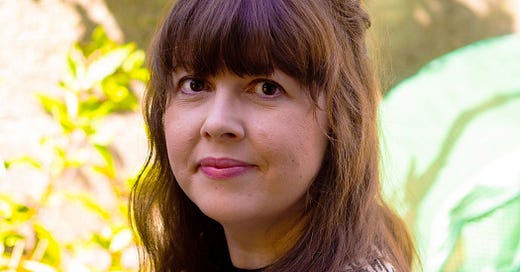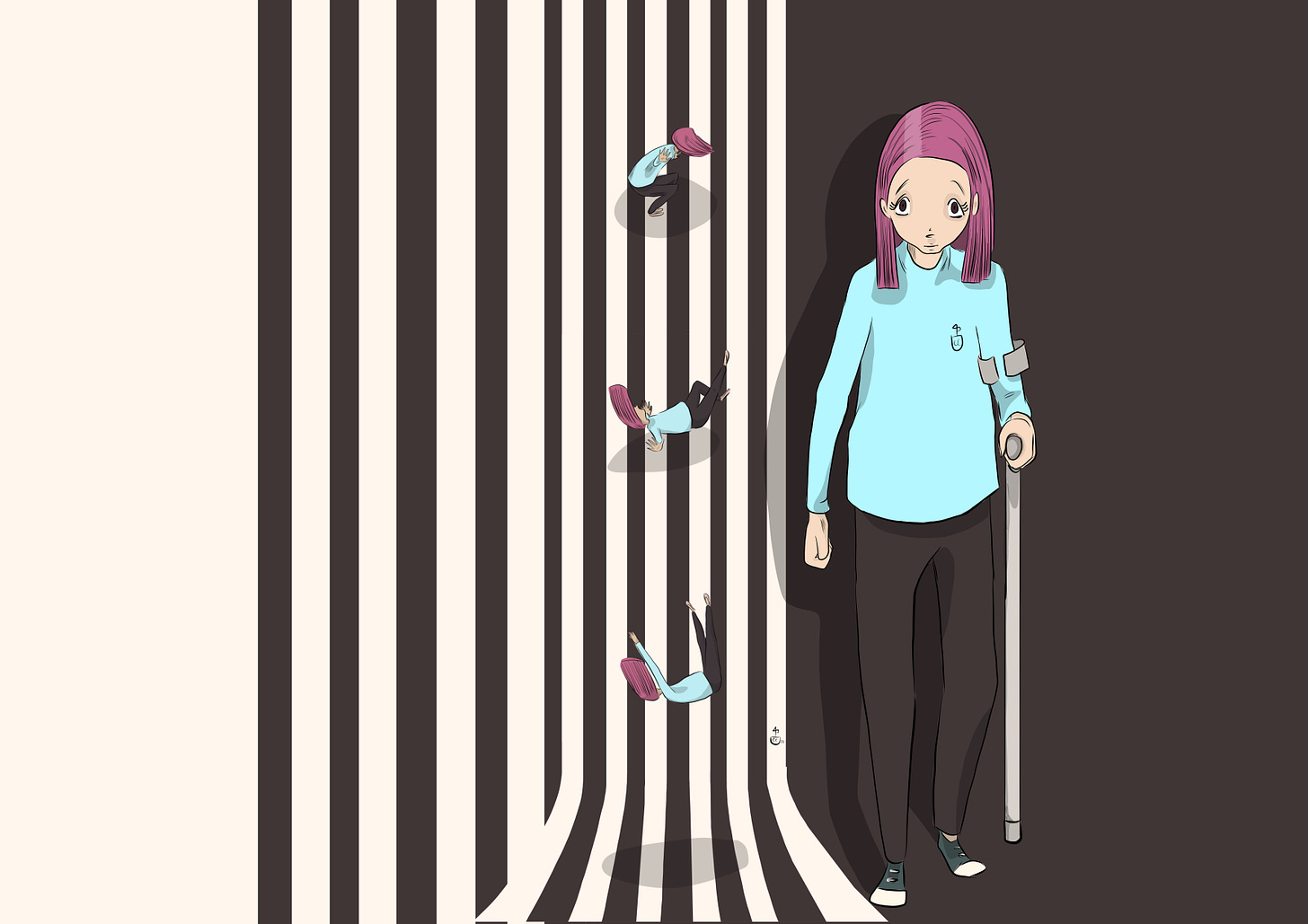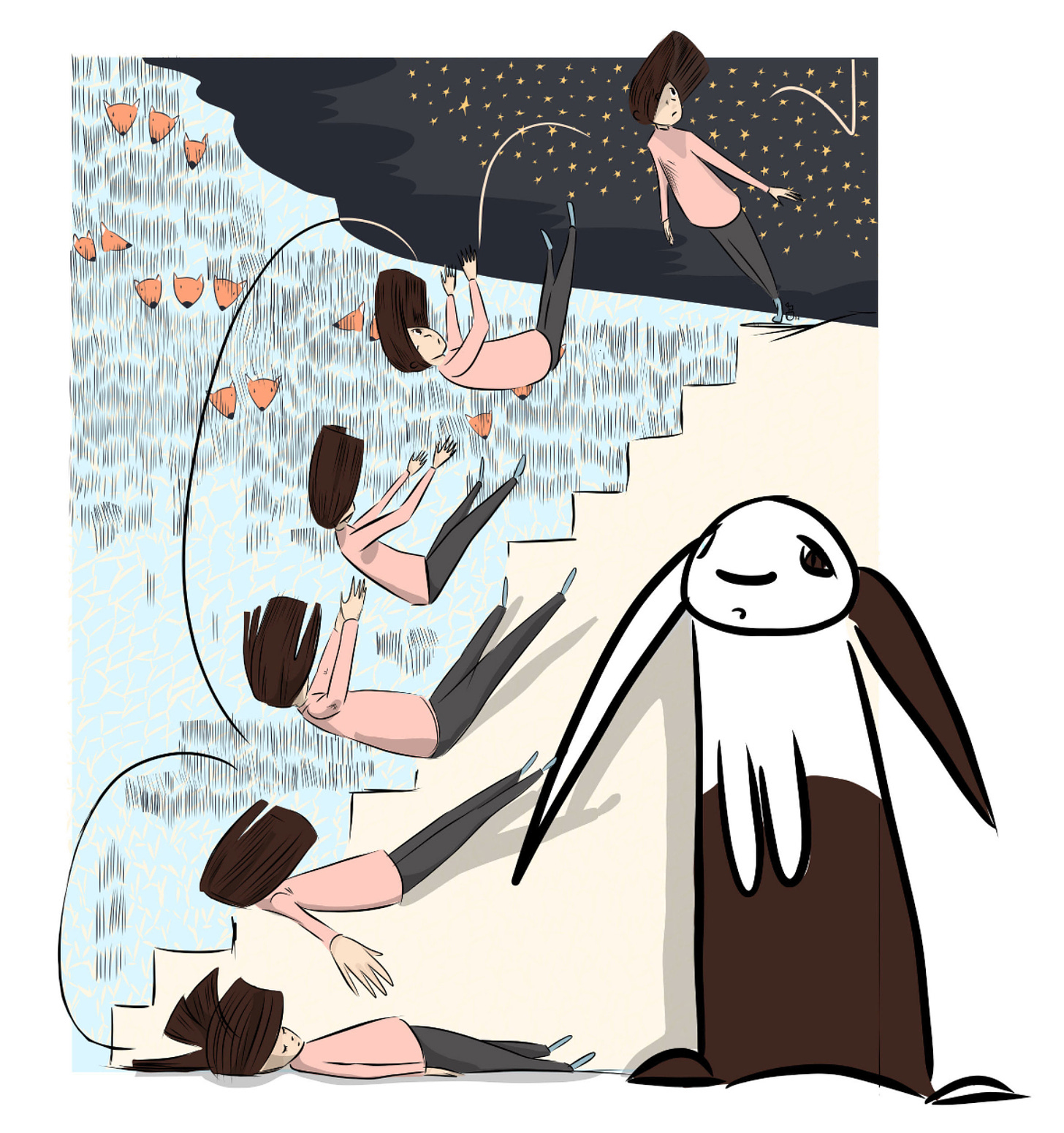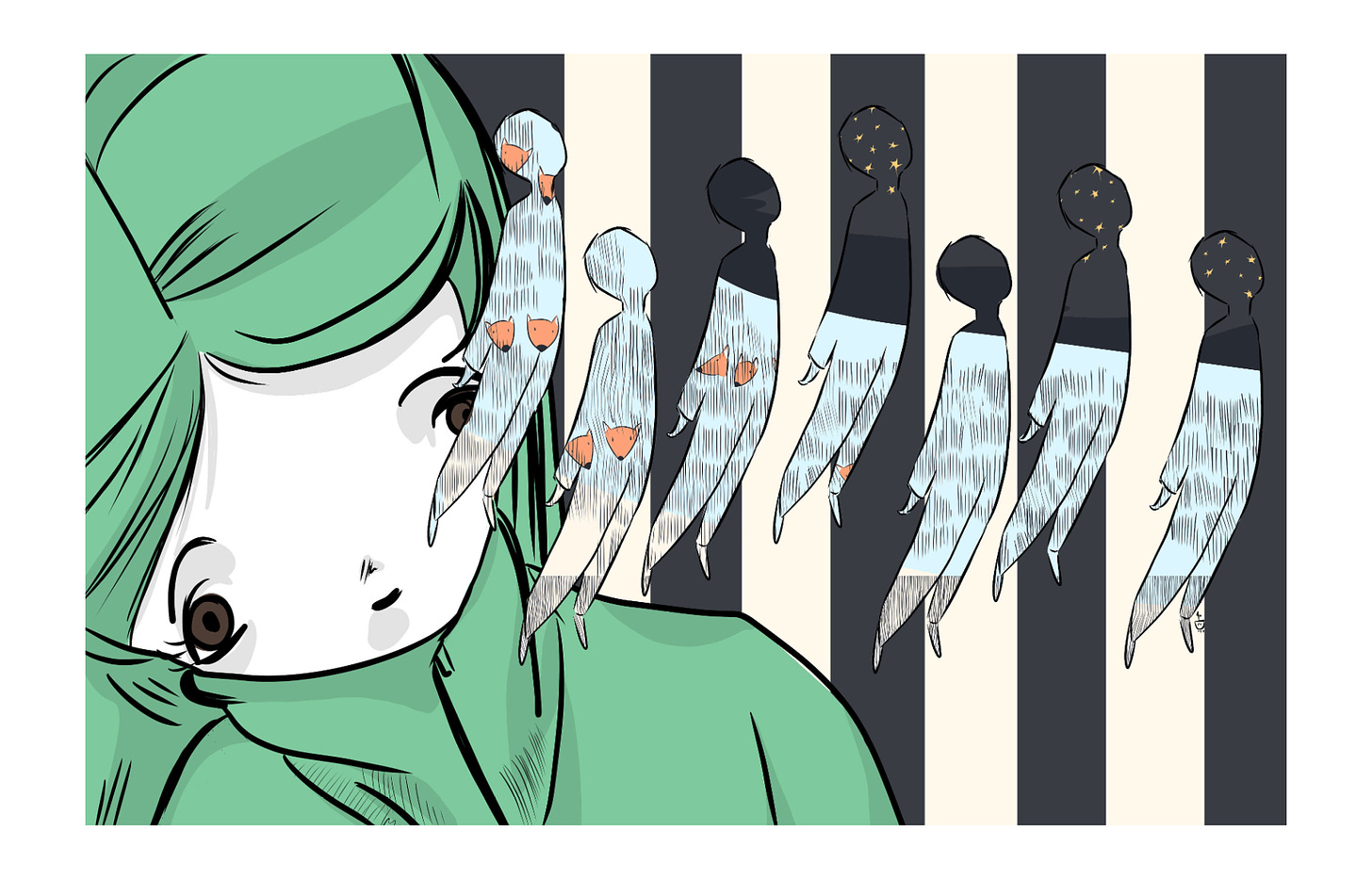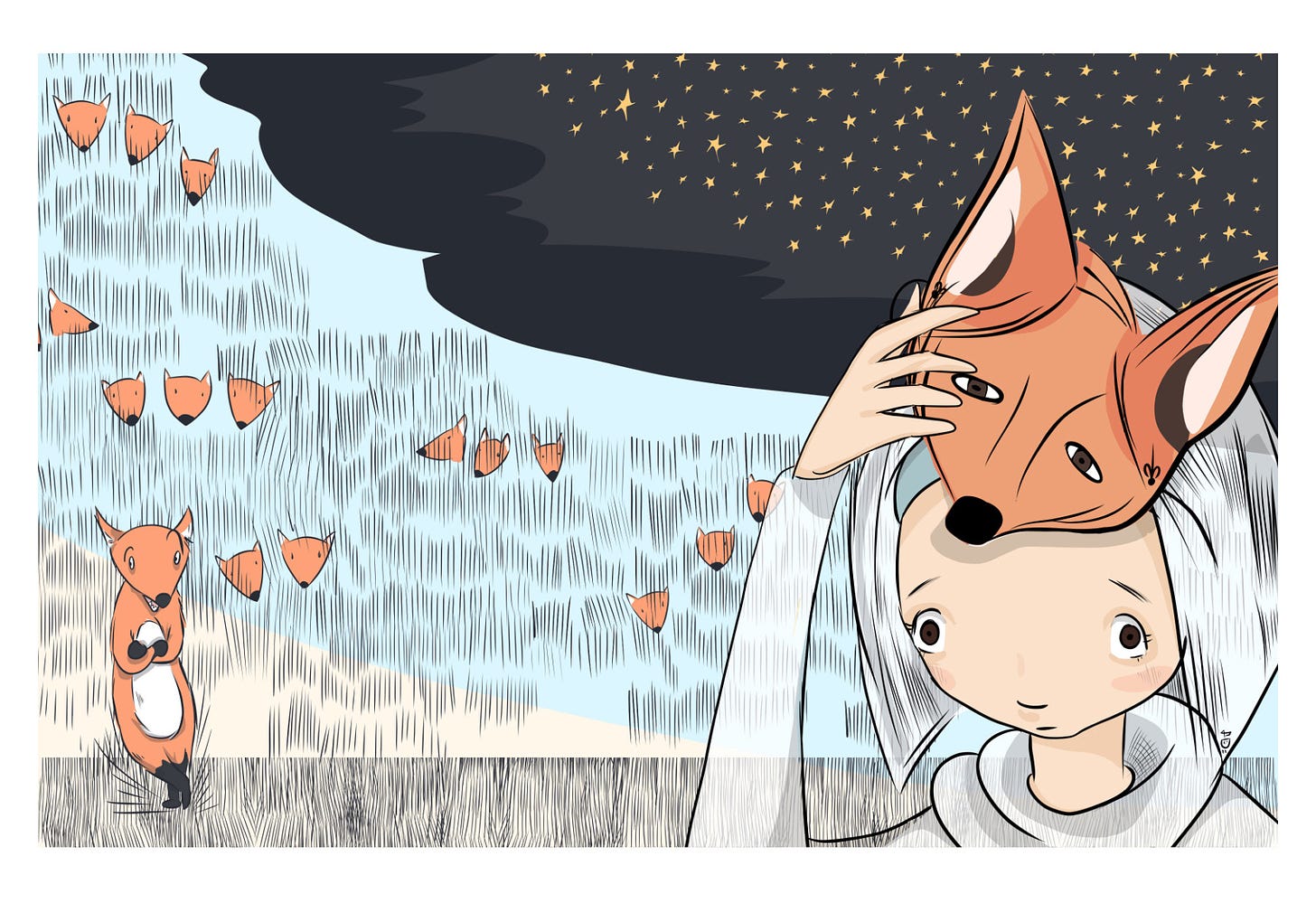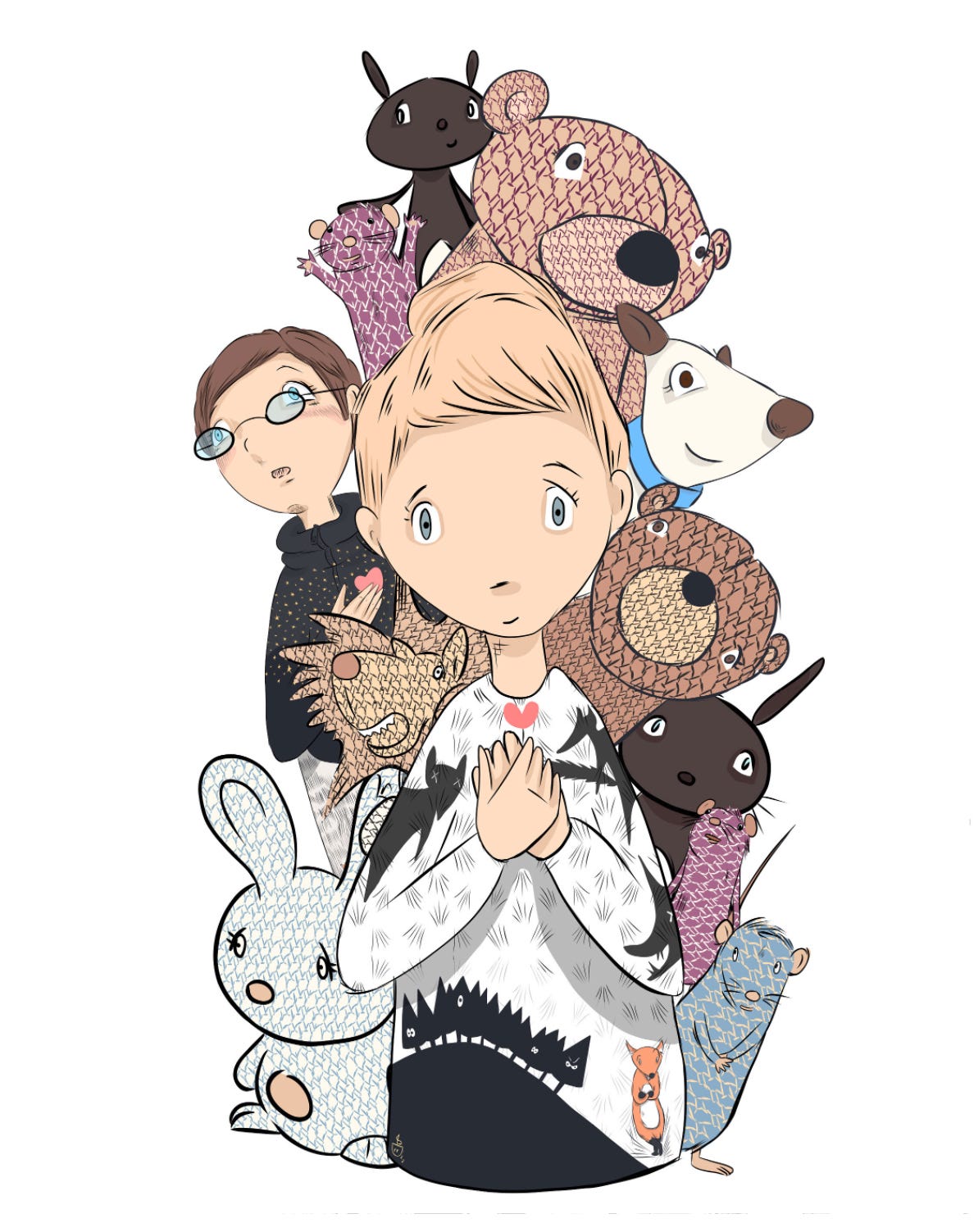Living with Chronic Pain
Over 100,000 people in Ireland live with severe chronic pain; artist Ciara Chapman is about to use Cork's Opera House as a canvas to bring visibility to suffering that often goes unnoticed.
Ciara is an award-winning artist specialising in digital illustration and digital printmaking as well as mixed media including embroidery and origami. She is a member of Cork Printmakers and the Association of Illustrators. Ciara has also collaborated with Chronic Pain Ireland (CPI) on a number of campaigns including Pain Awareness Month. CPI is the national support group for people living with chronic pain.
Cyborg
Where to begin? My human origins, my cyborg present, my artistic future?
Should my human origins dictate this article, and I write it in English, or should my sentient cyborg self write it using a binary combination of ones and zeros?
Human it is! The beauty and success of human beings is that life changes, and we adapt. That’s what my life in the last eight years has been, a series of unexpected events followed by my adapting to new sets of circumstances.
My name is Ciara Chapman. I am an artist and illustrator with a disability living and working in Cork city. I am currently working on a very ambitious project with Cork Opera House for Pain Awareness Month, which is September 2022.
I’ve designed an artwork over ten metres tall, that will run through the windows of Cork Opera House’s north wall, covering the three floors of the building. Windows appeal to me so much because they are viewable from the outside of the building. This way the image is open to everyone, and is highly accessible to those with limitations such as my own.
After the artwork is installed, I will have a scannable QR code on the window that sends the viewer to a Soundcloud link describing the artwork in detail, for anyone with sight issues. It will also provide a little information about the image itself, how it came to be and what it means.
A couple of years ago, a project like this would have been completely out of the question. There’s absolutely no way I could have committed to doing something for Culture Night. I was very much living day to day, as a slave to my pain.
Fortunately, last year I had a spinal stimulator installed that intercepts some of the pain I feel. I like to joke that I am a cyborg now: part human, part machine.
In May 2021, two wires were placed parallel to my spine, running down my back. They connect to a wire which leads to a battery implanted inside my right glute (my bottom!). It has a remote control to manage the level of power I feel from the stimulator during the day and at night. It intercepts the pain and feels like a buzzing going down my back and through my legs.
The change in my quality of life has been enormous, but how did I end up here anyway?
Crash, bang, wallop
Eight years ago I had a fall down the stairs at home. I remember it so clearly. It was like the set- up of an American sitcom, more The Three Stooges than Friends. I was running down our varnished wooden staircase in socks when my left foot slipped and flew up in the air, my right arm flew out to catch the banister and I came down hard on my pelvis.
I can almost hear the weird sound effects as I picture it in my mind. Crash, bang, wallop. I stood back up afterwards and felt like I was walking a bit lopsided, like one leg was slightly shorter than the other. I had a soreness in my back but thought I was ok.
Some days later, I woke up one morning with a sharp pain in my legs that spread throughout the day. I was initially told I had sciatica, but that it should leave in less than three weeks. Eight years later, my sciatica never left me.
Barbed wire
When it comes to medical treatments, we’re all snowflakes - everyone is different.
It was like time stopped for me after the accident. Actually, correction: time stopped for me and for my husband Dave, who I had married the previous year. We learned the value of patience while waiting for consultant interviews, scans, procedures and injections. I eventually got a diagnosis of chronic sciatica, neuropathy, drop foot, and compressed discs in my back.
What that translates to, for us non-medical mortals, is I have a very bad back and about thirty percent function in my left leg with fairly constant sciatica that feels like barbed wire wrapping around my hips and moving through both my legs. I was only able to leave my home for about two hours at a time before the pain became overwhelming and I would need to go home again.
Left behind
A couple of years after my accident, I was really struggling. I had no diagnosis yet and I was fed up of being home all the time. I could see parts of my personality beginning to change. All my friends were getting married and having children while I was burning through my savings, trying to find answers and being pushed from consultant to consultant.
I felt like I was moving further and further away from where I wanted to be in life and it was making me angry and really, really sad. I’d never been a person for it, but self-pity was creeping in.
I had an educational background in Fine Art printmaking from Limerick School of Art and Design and Graphic Design at St John’s Central College in Cork city. Before my accident my work was very clinical. I was self-conscious and didn’t like to express personal feelings in my art which, let’s face it, is the antithesis of being an artist, so unsurprisingly I had little success.
My Chronic Pain Diary
But at this angriest point of my life, post-accident, in 2016, I started to draw. After two years being confronted by all I couldn’t do, this was something I realised I could do. It was a revelation for me. I could draw how I felt, and I didn’t care what anyone else thought because I was doing it for myself. It was the beginning of an online project that I still work on now, called My Chronic Pain Diary.
When I began sharing my diary through social media I got such a supportive response, not just from friends and family, but also other people that I didn’t even know. I found it so interesting how specific people would respond to specific illustrations or diary entries. They had such a profound impact on those they reached. Some people felt they understood their loved one’s journeys through illness or pain better, and some people saw themselves in the art.
I had felt the illustrations were so personal to myself, there was no way anyone else could understand their meanings. I was overwhelmed with the number of people who contacted me to say, “I saw your piece titled ‘X,’ and I cried because it’s exactly how I feel right now.” So many people feel isolated and alone because of their pain, without realising that so many others are actually in the exact same situation.
“Try yoga”: Cruel optimism and helpful suggestions
Most of my interactions with people pre-diary were about things that worked for them. I remember reading somewhere before that if you are visiting someone with cancer don’t ask, “How are you?” Instead ask, “How are you today?” The latter is a question that is answerable, the former is completely unquantifiable.
In the same regard, when speaking with someone with pain or injury or illness, never tell them they need to move forward with their lives. It’s patronising and shows how completely disconnected you are from their reality. How do I move forward? Move forward day to day, as I have been? Move forward as if I were in my old life? Or throw my old life away, with no hope of it ever working for me again, and start over?
I must add at this point that people usually mean well, but at one point even the taxi drivers I would travel with to physiotherapy appointments were suggesting things like to try yoga, or acupuncture or a holistic healer they know who helped a friend of a friend of a friend.
I had tried all of these things but my problem was rooted in damage that would not heal overnight. It needed time and what I needed was to be patient. And though these were all very well-meaning suggestions, at the time, all I could hear was, “you’re not doing enough to help yourself,” “you are failing at life.” Interacting with other chronic pain sufferers through my diary meant I finally had a chance to listen to people who understood wholeheartedly and completely what I was experiencing.
The challenges of seeing consultants only to be sent away, to return in six months for scans only to be told they need new scans or different scans and to come back in another six months. Then when they diagnosed an issue I had, they would send me to another consultant to look at a separate section of my injuries: “I only deal with nerves, you’ll have to see another consultant for your hip and back problems.”
After a time, My Chronic Pain Diary wasn’t just art therapy for me: it was my link back to a career I thought I had lost as an artist. In 2018 I submitted it to some awards and received a commendation from the Institute of Designers in Ireland and I was shortlisted for the Association of Illustrators’ World Illustration Awards.
New Work and a new book
In the years that followed, I won a Silver A’Design Award, an Iron A’Design Award and was shortlisted for the London International Creative Communications Award. This built my confidence artistically. But it still meant I could only work from the chair I spend my days in at home. Last year I applied for the Arts Council’s New Work award. I wanted to print my diary as a hardcopy book.
Seeing all the illustrations in print was a moment of immense pride for me, my greatest accomplishment so far. To be able to hand it to my family and friends and say, “This is how I spent the past seven years; they weren’t wasted, I did something” was amazing.
I paired the book with an art trail for pain awareness month in shop windows throughout Cork city. It was important to me again to use windows. A person could drive from window to window if they were unable to take the steps. It’s the worst feeling - being left out and watching everyone enjoy something you can’t be a part of because of your physical or mental restrictions. I feel like windows are so inclusive.
I was so lucky after five long years to be put on the right track with a pain consultant who really understood what I was experiencing. But still before I could get the spinal stimulator that we knew I needed, I was required to follow the protocols set out by the health insurers, which meant another two years, from 2019 to 2021, of back injections, physiotherapy and a psychological assessment.
I had an enormous change in my physical condition when I had my spinal stimulator procedure. I get from 30 - 70% pain relief from the stimulator which means I can now leave my home for 5-6 hours at a time. I’ve been able to visit family, see friends and pursue my art in a more ambitious way. The New Work award challenges artists to think big, and that’s exactly what I have done.
A cyborg with a dream
Now here I am: a cyborg with a dream! And I look to the future. This is amazing because for so long, myself and my husband could not look beyond the next month. Now we are in a position to plan for our future.
Being part robot hasn’t brought out a thirst for world domination in me. The pain is still frustrating and exhausting and upsetting, but I won’t let it stop me from achieving the things in life that can often seem to come so easily to other people. I have learned that my path is a different one. Self pity, shame and guilt are pointless and won’t change the hand I have been dealt. I am what I am, and it is what it is. Acceptance, mindfulness and self care are what will see me through.
On the days I feel low and weak and insignificant, the support of the ones I love helps me push through to the next day, because chances are that one might be better. And whatever our circumstances are, life will surprise you.
September is Pain Awareness Month. Awareness of Chronic Pain means less stigma for those of us who experience it. The stigma is what cuts the deepest, the insinuations that you are faking your pain because it’s invisible to those who feel obliged to judge. Something being invisible is not the same as something not being real.
That’s what my whole project at Cork Opera House is about: the reality of Chronic Pain, even though we can’t see it.
Chronic Pain is black and white
My Opera House illustration is one of eight that I created around the theme “Chronic Pain is NOT make-believe.”
I looked at stigma, empathy, invisibility, strength and self care. I use patterns to connect the images and connect the theme. This series used dark and light stripes, silhouettes and cross-hatching patterns based on houndstooth fabric. It’s to show those lucky enough not to experience it how Chronic Pain is viewed as very black and white: you have pain, go to the doctor and get it treated, if it carries on after that then it’s all in your head!
The foxes represent my family, emerging from the grass and trees. This represents how it took a while for them to understand my condition. The characters in the image represent real things in my life like myself, my husband, our pets and friends as well as fairytale characters that represent what isn’t real: the “make-believe.”
These make-believe characters are covered in the houndstooth pattern to set them apart. Chronic pain might be invisible, but it’s certainly not make-believe. My lived experience has taught me that any pain, though we cannot see it, is real - very real.
Chronic Pain is NOT make-believe by Ciara Chapman will be on display at Cork Opera House from September 2 to September 30. Ciara will give an artists’ talk on the project for Culture Night in Cork Opera House on Friday September 23, from 6-7pm.

